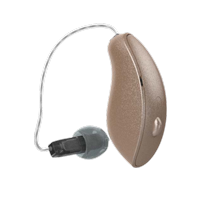Safety is a concern every time we get into our car and hit the road. Car accidents in the U.S. reach more than 6 million per year, and the average number of motor vehicle crash deaths is 10 per 100,000 persons per year. Careful driving requires sharp visual and auditory senses to make prompt and informed choices.
Although all drivers should note these traffic safety figures, they should be taken especially seriously for those with hearing loss. Among those with hearing loss, the ability to hear critical safety signals such as honking horns, blaring sirens, and vehicle acceleration are diminished, meaning the risk of an accident increases significantly.
Among those with hearing loss, driving with a hearing aid comes highly recommended, as it dramatically improves your hearing ability. Those with untreated loss should seek out professional treatment for hearing health before continuing to drive.
Once you have your hearing aids, here are some other things you can do to ensure a safe experience while on the road.
1. Test your eyes as well as your ears
If you drive with hearing aids, it is essential to ensure that your other senses are up to speed. Vision has a crucial role in keeping you safer, as it can help you stay abreast of traffic alerts, read traffic signs and notice flashing emergency lights even if you haven’t yet heard them.
Annually test your vision to make sure that your prescription is up to date, whether wearing glasses or contact lenses. If you noticed any sudden changes in your vision, visit your optometrist as soon as you can.
2. Stay vigilant of your surroundings
It is essential to keep your eyes on the road while driving. Visual indicators are critical when driving. Be more mindful of traffic signals, and use your side and rearview mirrors regularly.
Hearing loss affects the ability to identify the relative distance of moving vehicles, so it is essential to be aware of your environment to protect yourself and other drivers.
3. Lower the number of distractions
Not being distracted means you can focus entirely on the drive. But driving with hearing aids means maintaining a relatively quiet vehicle is especially important. Set the radio or music level to low enough not to disturb your drive.
If you travel with noisy passengers, you might want to ask them to keep down their voices. You will be able to carry on a conversation while driving, with hearing aids in place. But when you need to listen for other sounds, do not hesitate to postpone the discussion.
You can also ask other passengers to keep their voices down while the vehicle is in motion, as driving with hearing aids puts even greater importance on a quiet car.
Sometimes opening the windows at high speeds can be too much for your hearing aids, and you might want to drive on the highway with the air conditioning instead of being exposed to the noisy wind.
4. Keep a card visor in your car
In case you need to deal with a traffic officer or highway patrol, you may want to consider carrying a visor card clipped inside your windshield viewfinder. The card is a clear way to tell the officer you might have trouble hearing their directions.
You should put your visor down and swing it towards your window if you’re pulled over and then hold your hands onto the wheel. Having instructions in writing can help keep communication clear at a traffic stop. You can order or download visor cards online.
5. Perform regular maintenance
If you are driving with hearing loss, regular maintenance of your vehicle is especially important. There’s a chance you might miss the warning beep from the dashboard, or you may not hear the rattling under the hood. If you miss the small noises, if it turns into a larger sound, you’ll have a much bigger problem. Make sure you regularly service your car.
Treating Hearing Loss
Better hearing – which begins with treating your hearing loss – will help keep you active both mentally and physically, whether on the road or off it. Call us and schedule your annual hearing test today.










